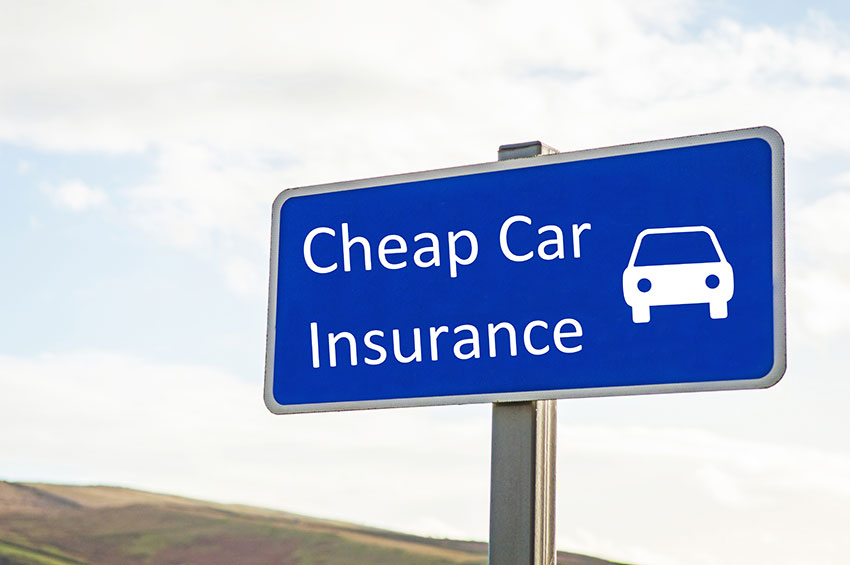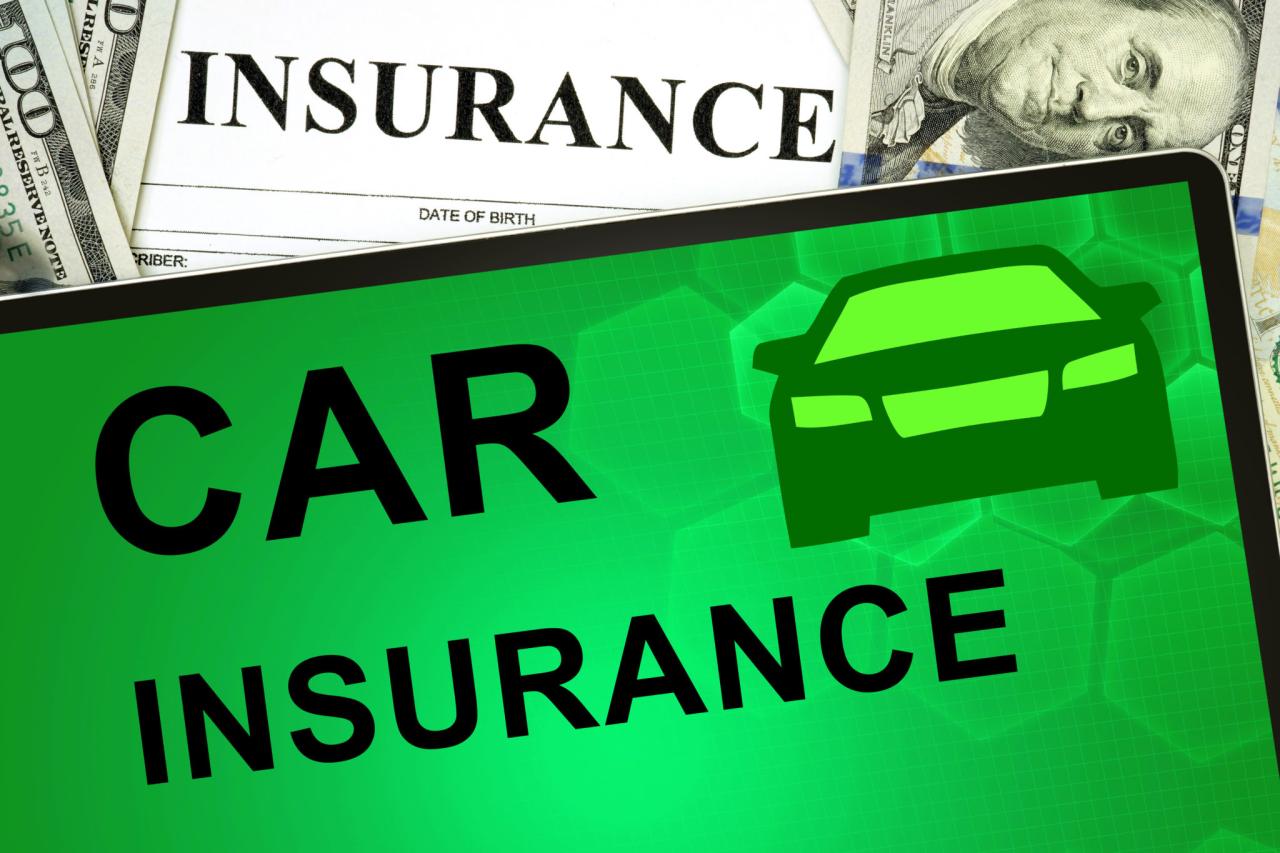
Car insurance for cheap is a common goal for many drivers, but finding the right coverage at the right price can be a daunting task. This guide will delve into the world of car insurance, exploring the different types of coverage, factors influencing premiums, and strategies for lowering your costs. We’ll also examine alternative insurance options and provide tips for making informed decisions to ensure you’re getting the best value for your money.
From understanding the basics of car insurance to exploring non-traditional providers, this comprehensive guide will equip you with the knowledge you need to navigate the complex world of car insurance and secure the most affordable coverage for your needs.
Understanding Car Insurance Basics
Car insurance is a crucial financial safety net that protects you from the financial consequences of accidents, theft, and other unexpected events. Understanding the different types of coverage, factors that influence premiums, and common insurance terms can help you make informed decisions and secure the right coverage for your needs.
Types of Car Insurance Coverage
Car insurance policies typically include several types of coverage, each designed to address specific situations.
- Liability Coverage: This essential coverage protects you financially if you are at fault in an accident that causes damage to another person’s property or injuries to another person. It covers the other driver’s medical expenses, lost wages, and property damage up to the policy limits.
- Collision Coverage: Collision coverage helps pay for repairs or replacement of your vehicle if it is damaged in an accident, regardless of who is at fault. However, you will have to pay your deductible before the insurance company covers the remaining costs.
- Comprehensive Coverage: Comprehensive coverage protects your vehicle against damages caused by events other than collisions, such as theft, vandalism, fire, hail, or floods. Similar to collision coverage, you will need to pay your deductible before the insurance company covers the remaining costs.
- Uninsured/Underinsured Motorist Coverage: This coverage protects you if you are involved in an accident with a driver who does not have insurance or has insufficient insurance to cover your damages. It can help pay for your medical expenses, lost wages, and property damage.
- Personal Injury Protection (PIP): PIP coverage, also known as no-fault insurance, helps cover your medical expenses and lost wages regardless of who is at fault in an accident. It is often required in certain states.
- Medical Payments Coverage (Med Pay): Med Pay coverage helps pay for your medical expenses, regardless of who is at fault in an accident. It is often optional and can be used in addition to PIP coverage.
Factors Influencing Car Insurance Premiums
Several factors determine your car insurance premium, which is the amount you pay for your insurance policy.
- Age: Younger drivers are statistically more likely to be involved in accidents, leading to higher premiums. As you age and gain experience, your premiums may decrease.
- Driving History: Your driving record significantly impacts your premiums. Accidents, speeding tickets, and other violations can increase your premium. Maintaining a clean driving record can help you get lower rates.
- Vehicle Type: The make, model, and year of your vehicle influence your premium. Sports cars and luxury vehicles are often more expensive to insure due to their higher repair costs and increased risk of theft.
- Location: Where you live can also affect your premium. Areas with higher crime rates, traffic congestion, and accident rates typically have higher insurance premiums.
- Credit Score: In some states, insurance companies use your credit score to assess your risk. A good credit score can lead to lower premiums, while a poor credit score may result in higher rates.
- Coverage Levels: The amount of coverage you choose can significantly impact your premium. Higher coverage limits, such as higher liability limits or a lower deductible, will generally result in higher premiums.
Common Insurance Terms
Understanding common insurance terms can help you navigate your policy and make informed decisions.
- Deductible: The deductible is the amount you pay out-of-pocket before your insurance coverage kicks in. A higher deductible typically results in a lower premium, while a lower deductible leads to a higher premium.
- Premium: The premium is the amount you pay for your insurance policy, typically on a monthly or annual basis.
- Coverage Limits: Coverage limits represent the maximum amount your insurance company will pay for a particular type of claim. For example, liability coverage limits determine the maximum amount your insurance company will pay for damages to other people’s property or injuries to other people.
- Policy Period: The policy period is the duration of your insurance policy, typically one year. After the policy period expires, you will need to renew your policy.
- Claim: A claim is a request for payment from your insurance company after an accident or other covered event.
Finding Affordable Car Insurance Options
Finding the right car insurance policy can be a challenging task, especially when you’re looking for the most affordable option. With so many providers and plans available, it’s essential to compare quotes and understand your coverage needs to make an informed decision.
Comparing Car Insurance Quotes
It’s crucial to obtain quotes from multiple car insurance providers to compare their prices and coverage options. This will help you find the best value for your money.
Here are some tips for getting car insurance quotes:
- Use online comparison tools: Many websites allow you to enter your information once and receive quotes from various insurance companies simultaneously.
- Contact insurance providers directly: Call or visit the websites of different insurance companies to request quotes.
- Be prepared to provide information: Insurance companies will need your personal information, vehicle details, driving history, and coverage preferences to generate a quote.
Comparing Car Insurance Companies
Once you have quotes from different insurance providers, compare their pricing and coverage options. Consider factors such as:
- Premiums: Compare the monthly or annual cost of each policy.
- Deductibles: The deductible is the amount you pay out of pocket before your insurance coverage kicks in. Lower deductibles usually result in higher premiums, and vice versa.
- Coverage limits: The coverage limits determine the maximum amount your insurance company will pay for a covered claim.
- Discounts: Many insurance companies offer discounts for safe driving, good credit, multiple policies, and other factors.
- Customer service: Research each company’s reputation for customer service, claims handling, and overall satisfaction.
Car Insurance Provider Comparison Table, Car insurance for cheap
Here’s a table comparing the pros and cons of various car insurance providers. Remember that pricing and coverage options can vary depending on your location, driving history, and other factors.
| Provider | Pros | Cons |
|---|---|---|
| Company A | – Competitive pricing – Excellent customer service |
– Limited coverage options – Fewer discounts available |
| Company B | – Comprehensive coverage – Wide range of discounts |
– Higher premiums – Slower claims processing |
| Company C | – Affordable premiums – Easy online quote process |
– Basic coverage – Limited customer support |
Strategies for Lowering Car Insurance Costs: Car Insurance For Cheap
Lowering your car insurance premiums can significantly impact your budget, especially if you’re on a tight one. Thankfully, several strategies can help you save money on your car insurance.
Improving Your Driving Record
A clean driving record is a significant factor in determining your car insurance premiums. Insurers often reward safe drivers with lower rates. Here are some ways to improve your driving record and potentially lower your premiums:
- Take a Defensive Driving Course: These courses teach you safe driving techniques and strategies to avoid accidents, which can improve your driving skills and potentially earn you a discount on your insurance.
- Avoid Traffic Violations: Every speeding ticket, reckless driving citation, or DUI conviction will increase your premiums. Driving safely and responsibly is crucial for keeping your rates low.
- Maintain a Clean Driving History: Accidents, even if you weren’t at fault, can still raise your insurance rates. Be a safe and defensive driver to avoid accidents and keep your premiums low.
Bundling Insurance Policies
Bundling your car insurance with other insurance policies, like home, renters, or life insurance, can often result in significant discounts. This is because insurance companies offer discounts for multiple policies with the same insurer.
- Home and Auto Bundling: This is the most common type of bundling, and it often offers the most substantial discounts. You can save money by insuring both your home and car with the same company.
- Renters and Auto Bundling: If you rent your home, you can still bundle your renters insurance with your car insurance for discounts.
- Life and Auto Bundling: While less common, some insurance companies offer discounts for bundling life insurance with car insurance.
Common Car Insurance Discounts
Insurance companies offer a variety of discounts to help you save money on your premiums. Here are some common car insurance discounts:
- Good Student Discount: Many insurance companies offer discounts to students who maintain good grades. This discount recognizes the responsibility and maturity demonstrated by good academic performance.
- Safe Driver Discount: Drivers with a clean driving record, no accidents, and no traffic violations can qualify for a safe driver discount. This discount reflects the lower risk associated with responsible drivers.
- Multi-Car Discount: If you have multiple cars insured with the same company, you can often get a discount for insuring all your vehicles together. This is because the insurer benefits from insuring multiple vehicles within the same household.
- Anti-theft Device Discount: Installing anti-theft devices in your car, such as alarms or tracking systems, can make your car less attractive to thieves and earn you a discount on your insurance.
- Loyalty Discount: Some insurance companies reward long-term customers with loyalty discounts. This is a way to encourage customer retention and recognize their long-standing relationship with the insurer.
- Payment Discount: Paying your car insurance premiums in full or setting up automatic payments can often result in a discount. This simplifies the billing process for the insurer and reduces administrative costs.
- Vehicle Safety Feature Discount: Cars with advanced safety features, such as anti-lock brakes, airbags, or electronic stability control, are generally considered safer and may qualify for a discount.
Exploring Alternative Insurance Options

While traditional car insurance companies dominate the market, a growing number of alternative options are emerging, offering different approaches to coverage and pricing. These non-traditional providers can be a viable choice for drivers seeking more flexibility, customization, and potentially lower premiums.
Types of Alternative Insurance Providers
The landscape of alternative car insurance providers is diverse, offering a range of approaches to coverage and pricing. Some of the most common types include:
- Online-Only Insurers: These companies operate solely online, eliminating the need for physical branches and agents. They often offer competitive rates and streamlined processes, but may lack the personalized service of traditional insurers.
- Peer-to-Peer (P2P) Insurers: P2P insurance platforms connect drivers with other drivers willing to share risk and premiums. This model can lead to lower rates, especially for safe drivers, but may involve a higher degree of risk and less comprehensive coverage.
- Usage-Based Insurance (UBI): UBI programs track your driving habits, such as mileage, speed, and braking patterns, to determine your premiums. Drivers with safe driving habits can earn discounts, while those with riskier driving behaviors may face higher rates.
Advantages of Alternative Insurance Options
Alternative insurance providers offer several advantages that can be appealing to certain drivers, such as:
- Lower Premiums: Online-only insurers often have lower overhead costs, which can translate into more affordable rates. P2P insurance can also lead to lower premiums for safe drivers, as they share risk with other responsible drivers.
- Flexibility and Customization: Many alternative providers offer customizable coverage options, allowing you to choose the level of protection that best suits your needs and budget. This can be particularly beneficial for drivers with unique situations, such as those who drive infrequently or have a high-performance vehicle.
- Convenience: Online-only insurers offer a seamless online experience, allowing you to manage your policy, file claims, and access information from the comfort of your home.
Disadvantages of Alternative Insurance Options
While alternative insurance options offer advantages, they also come with certain drawbacks:
- Limited Coverage: Some alternative providers may offer less comprehensive coverage than traditional insurers. It’s essential to carefully review the policy details to ensure you have adequate protection for your needs.
- Potential for Higher Premiums: While alternative options can lead to lower premiums for some drivers, they can also result in higher rates for those with riskier driving behaviors or who drive frequently.
- Lack of Personal Service: Online-only insurers and P2P platforms may offer less personalized service than traditional insurers. This can be a disadvantage for drivers who prefer face-to-face interactions with insurance agents.
Comparison of Coverage and Pricing
The coverage and pricing of traditional vs. alternative insurance providers can vary significantly depending on factors such as your driving record, vehicle type, location, and the specific insurer.
| Feature | Traditional Insurers | Alternative Insurers |
|---|---|---|
| Coverage Options | Wide range of coverage options, including comprehensive, collision, liability, and uninsured motorist coverage. | May offer fewer coverage options, especially for P2P insurers. Some online-only insurers may offer more customizable coverage choices. |
| Pricing | Premiums typically based on factors such as age, driving history, vehicle type, and location. | Premiums may be lower for safe drivers or those who drive infrequently, but can be higher for riskier drivers or those who drive frequently. |
| Customer Service | Typically offer more personalized service through physical branches and agents. | May offer less personalized service, with online interactions and limited phone support. |
It’s important to compare quotes from multiple providers, both traditional and alternative, to find the best fit for your needs and budget. Consider factors such as the level of coverage, pricing, customer service, and the insurer’s reputation when making your decision.
Making Informed Decisions

Choosing the right car insurance policy is crucial for safeguarding your finances in case of an accident. Making an informed decision involves carefully evaluating your needs, comparing different options, and understanding the intricacies of insurance policies.
Choosing the Right Car Insurance Policy
A step-by-step guide to choosing the right car insurance policy:
- Assess Your Needs: Begin by considering your individual requirements. Factors like your driving history, the type of car you own, your budget, and your coverage preferences all play a role. For instance, if you have a new car, comprehensive and collision coverage might be essential.
- Get Quotes from Multiple Insurers: Contact several insurance companies to obtain quotes. Compare their coverage options, deductibles, premiums, and any additional benefits they offer.
- Read and Compare Policy Documents: Carefully review the policy documents from each insurer. Pay close attention to the coverage details, exclusions, and any specific terms and conditions.
- Consider Deductibles: A higher deductible usually translates to a lower premium. However, it also means you’ll pay more out of pocket in case of an accident. Carefully weigh the trade-off between premium savings and potential out-of-pocket expenses.
- Explore Additional Coverage: Consider optional coverage like roadside assistance, rental car reimbursement, or uninsured/underinsured motorist coverage. These additions can provide extra protection in specific situations.
- Seek Expert Advice: If you’re unsure about specific coverage options or have complex insurance needs, consult an independent insurance broker or agent. They can provide unbiased advice and help you navigate the insurance landscape.
Understanding Insurance Policy Documents
Reading and understanding insurance policy documents is essential for making informed decisions. Key aspects to focus on include:
- Coverage Details: Clearly understand what types of events are covered by the policy, including accidents, theft, vandalism, and natural disasters.
- Exclusions: Be aware of situations or events that are not covered by the policy, such as specific types of accidents or damage.
- Deductibles: Identify the amount you’ll pay out of pocket before the insurance company covers the remaining expenses.
- Premiums: Understand how your premium is calculated and the factors that can influence it.
- Terms and Conditions: Carefully review the policy’s terms and conditions, including any specific requirements or limitations.
Negotiating with Insurance Providers
While insurance premiums are generally fixed, you can still explore negotiation strategies to potentially secure better rates:
- Bundle Policies: Consider bundling your car insurance with other insurance policies, such as home or renters insurance, from the same provider. Many insurers offer discounts for bundling multiple policies.
- Ask for Discounts: Inquire about potential discounts for safe driving, good credit scores, or other factors that might qualify you for lower premiums.
- Shop Around Regularly: Compare quotes from different insurers periodically, even if you’re satisfied with your current provider. Market conditions and your individual circumstances may change, making it advantageous to re-evaluate your options.
- Negotiate Deductibles: If you’re comfortable with a higher deductible, you may be able to negotiate a lower premium.
- Consider Payment Options: Explore different payment options, such as paying annually or semi-annually, which may offer discounts.
Ultimate Conclusion

In conclusion, finding car insurance for cheap requires a proactive approach. By understanding the basics of car insurance, exploring different options, and implementing cost-saving strategies, you can significantly reduce your premiums while ensuring adequate coverage. Remember, it’s essential to compare quotes, read policy documents carefully, and negotiate with insurance providers to secure the best possible rates. With a little effort, you can find affordable car insurance that meets your specific needs and protects you on the road.
Top FAQs
What are the most common types of car insurance coverage?
The most common types of car insurance coverage include liability, collision, comprehensive, and uninsured/underinsured motorist coverage.
How can I get a free car insurance quote?
You can get a free car insurance quote online or by contacting insurance providers directly. Many websites allow you to compare quotes from multiple providers side-by-side.
What is a deductible?
A deductible is the amount you pay out of pocket before your insurance coverage kicks in for a claim.
What is the difference between traditional and alternative car insurance providers?
Traditional car insurance providers are established companies with extensive networks and a long history. Alternative providers often operate online and may offer more flexible or specialized coverage options.





